Let’s check how to remove default Microsoft Store packages using Intune Configuration. The RemoveDefaultMicrosoftStorePackages feature in Intune helps IT administrators streamline Windows deployments by automatically removing unwanted built-in Microsoft Store apps from devices during provisioning or post-enrollment.
Windows often includes several consumer-focused applications that may not be suitable for corporate environments, such as entertainment, gaming, or social media apps. By leveraging this Intune capability, organizations can maintain a cleaner and more secure workspace while ensuring users have access only to business-essential applications. This is a brand-new feature available on devices running Windows 11 25H2.
Using Intune, administrators can configure app removal through Device Configuration Profiles or Intune Enrollment Status Page (ESP) customization during Autopilot deployment. Intune supports the RemoveDefaultMicrosoftStorePackages CSP (Configuration Service Provider), which automates the process of removing preinstalled apps from devices. This ensures that when a user signs in for the first time, unnecessary applications are already removed, resulting in a faster and more consistent setup experience. IT teams can also apply these settings selectively to specific device groups to maintain flexibility across departments or roles.
Implementing this policy not only enhances system performance but also simplifies device management and compliance. It reduces clutter in the Start menu, decreases background update activity, and minimizes potential security risks associated with unapproved Store apps. After removal, administrators can use Intune’s Microsoft Store app (new) management feature or Winget app deployment to deliver approved and business-critical applications back to the device. This end-to-end control ensures a professional, secure, and policy-compliant Windows environment across the organization.
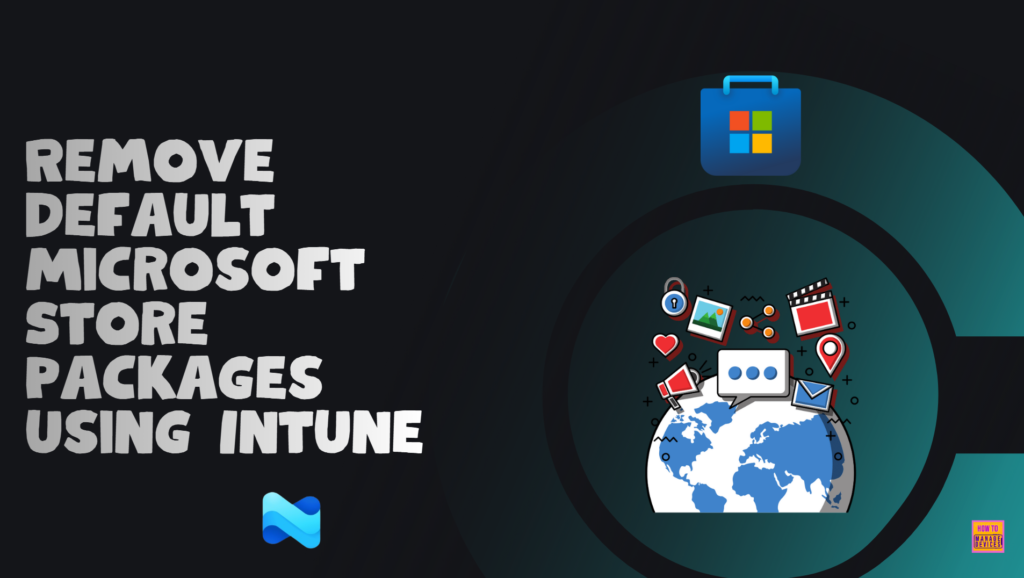
Table of Contents
Remove Default Microsoft Store Packages Supported Platforms Details
This policy removes default Microsoft Store packages from the system. When enabled, it uninstalls the Microsoft Store apps selected in the provided list. You can customize the default configuration as needed. Any apps not selected in the list will remain installed on the system.
| Policy Scope | Editions | Applicable OS |
|---|---|---|
| ❌ User ✅ Device | ❌ Home ❌ Pro ✅ Enterprise ✅ Education ✅ IoT Enterprise / IoT Enterprise LTSC | ✅ Windows Insider Preview [11.0.26100] ✅ Windows 11 25H2 |
- Easy way to Enable Windows Backup using Microsoft Intune Configuration
- How to Configure Windows Backup and Restore in Microsoft Intune
- Microsoft Plans to Retire Device Metadata on Windows by End of 2025
- How to Create Entra Joined Azure Network Connection for Windows 365 Cloud PCs in Intune
Create a Configuration Policy to Remove Default Microsoft Store Packages
To Remove Default Microsoft Store Packages using Microsoft Intune, follow these steps. First, sign in to the Microsoft Intune Admin Center with your administrator credentials.
- Navigate to Devices > Windows > Manage devices > Configuration
- Click on +Create > +New Policy
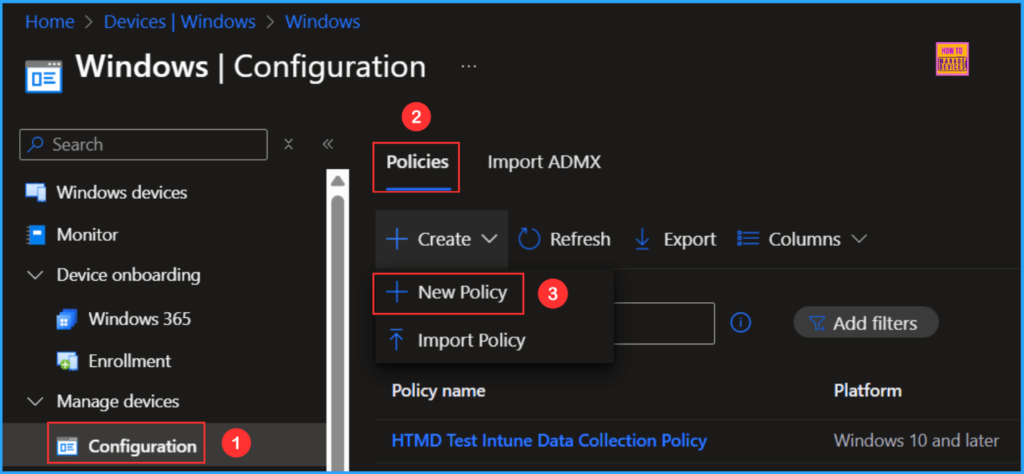
Next, we will create a new configuration profile from scratch. First, need to provide the options mentioned below. The settings catalog is a library of available configurations in Intune.
- Platform: Windows 10 and later
- Profile type: Settings catalog
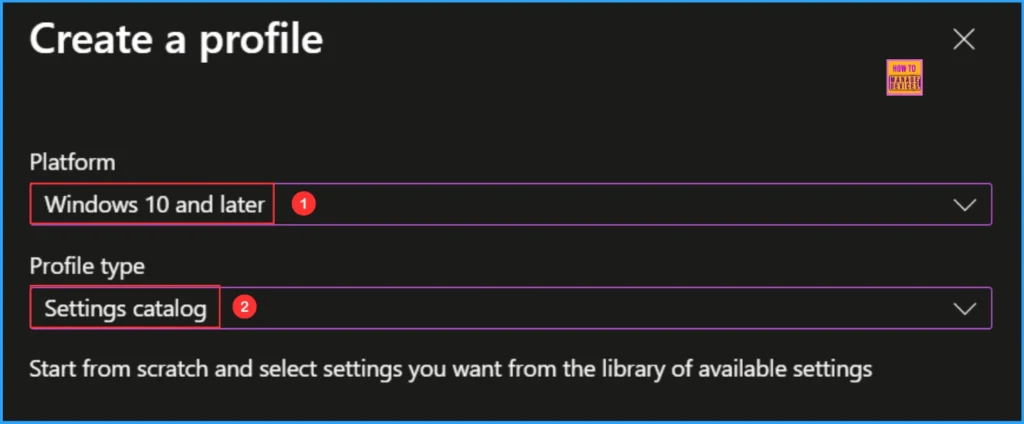
In the Basics details pane, name the configuration policy “Remove Default Microsoft Store Packages“. It’s also helpful to provide a brief description of the policy’s purpose. After that, click Next.
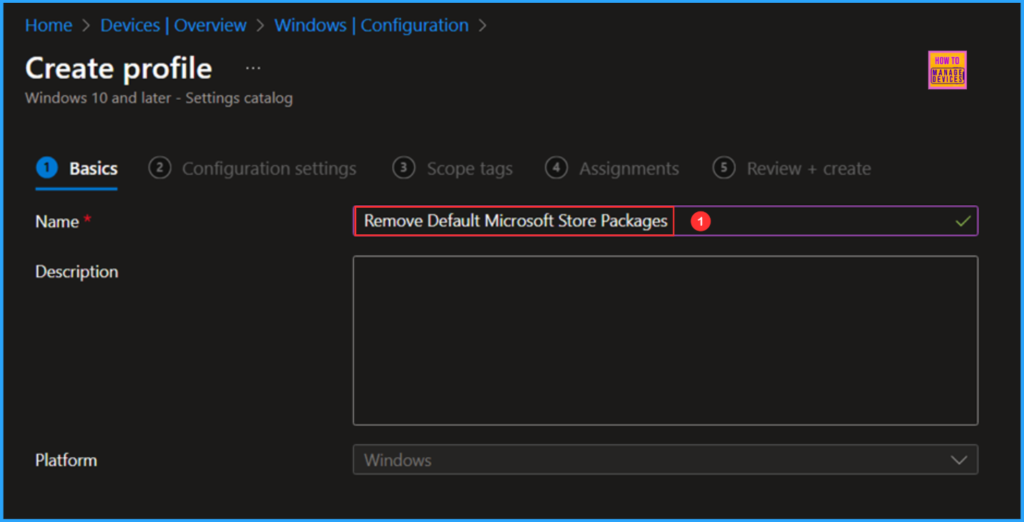
We can now add the necessary settings to the Configuration settings pane. To do this, click on +Add settings in the bottom left corner of the page.
Note: In Microsoft’s testing they have discovered admins may experience performance degradation when greater than 400 settings are added to a single policy. While they continue to make improvements, please take this into consideration when designing your policies.
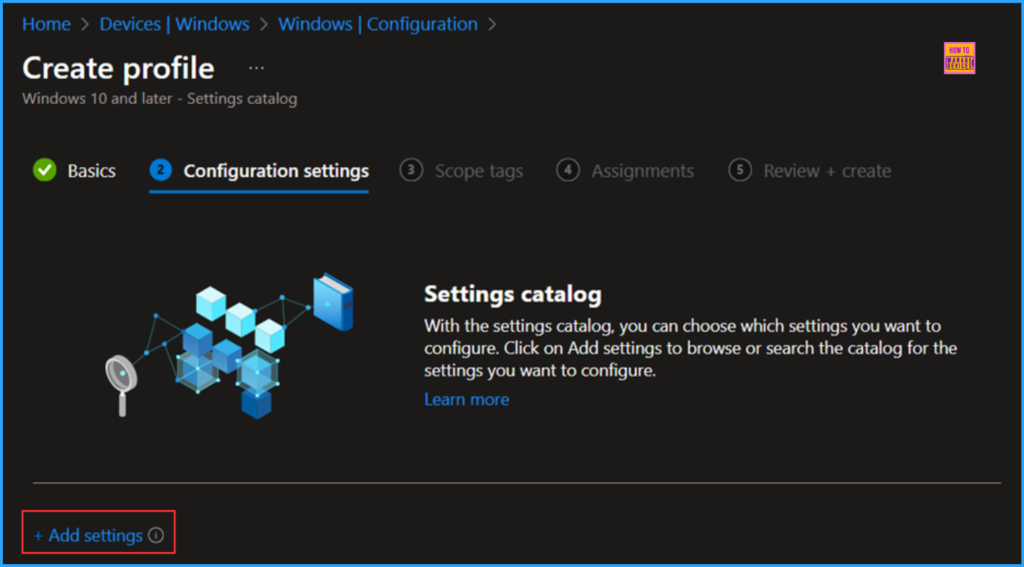
Search for “Remove Default Microsoft Store Packages” as your keyword. This will help us find the appropriate policy based on your current needs. Next, navigate to the category labeled Administrative Templates\Windows Components\App Package Deployment. Click on it, then check the option “Remove Default Microsoft Store Packages for the system.” Finally, close the Settings picker window.
Note: Removes Default Microsoft Store packages from the system. If you enable this policy, the selected Microsoft Store apps in the provided list will be uninstalled from the system. You can make adjustments to the default settings. Unselected apps in the list will not be removed. Default is ‘disabled’ (key not present). If the policy is disabled or not configured, no Default Microsoft Store packages will be removed from the system. * This is a headless app (no UI) ** This app is the default handler for a common file type or protocol. Removing this app might result in a degraded user experience. We do not recommend removing this app. Here is the OMA URI of this policy: ./Device/Vendor/MSFT/Policy/Config/ApplicationManagement/RemoveDefaultMicrosoftStorePackages
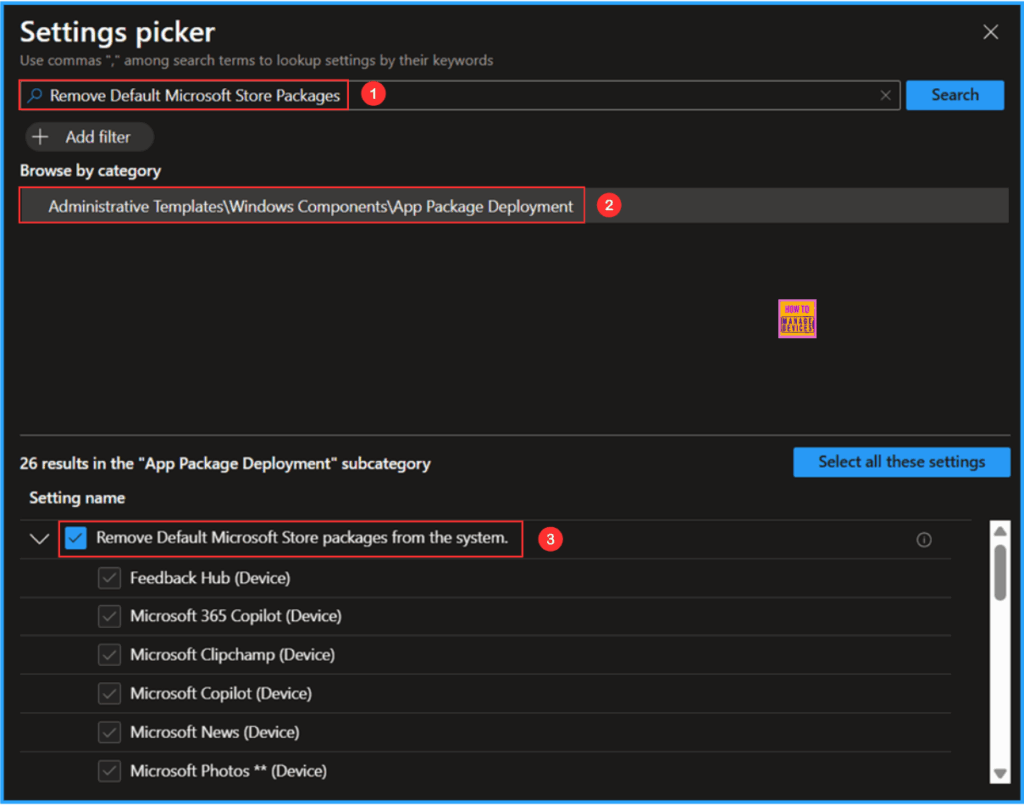
On the App Package Deployment configuration settings page, ensure that you toggled on the Apps that you want to remove. Also, enable the option to Remove Default Microsoft Store packages from the system, and then click Next. Here am removing the below mentioned default Microsoft Store Packages.
- Microsoft Solitaire Collection (Device)
- Xbox Gaming App (Device)
- Xbox Identity Provider * (Device)
- Xbox Speech To Text Overlay * (Device)
- Xbox TCUI * (Device)
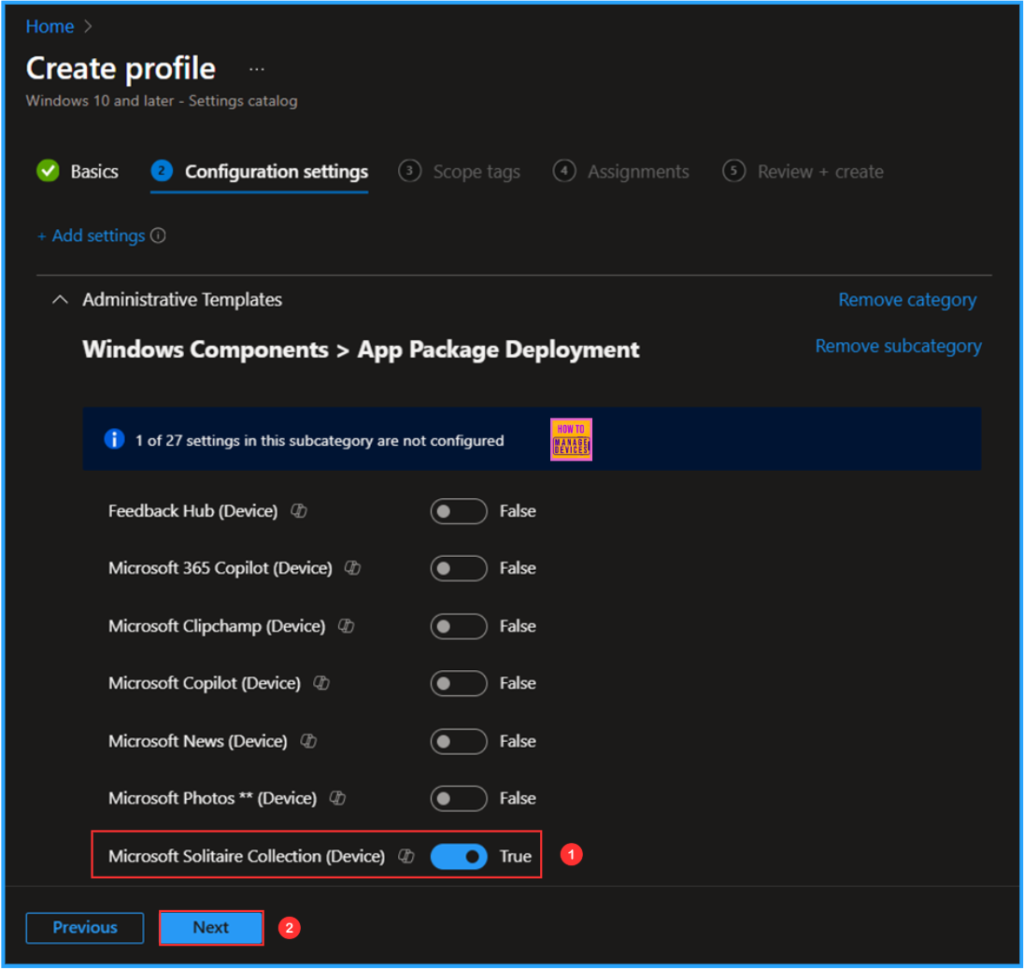
Available Default Microsoft Store Packages in Intune Configuration
This table lists all available Default Microsoft Store Packages that can be managed through Intune Configuration policy.
| App Package Deployment | Current Configuration |
|---|---|
| Feedback Hub (Device) | False |
| Microsoft 365 Copilot (Device) | False |
| Microsoft Clipchamp (Device) | False |
| Microsoft Copilot (Device) | False |
| Microsoft News (Device) | False |
| Microsoft Photos ** (Device) | False |
| Microsoft Solitaire Collection (Device) | True |
| Microsoft Sticky Notes (Device) | False |
| Microsoft Teams (Device) | False |
| Microsoft To Do (Device) | True |
| MSN Weather (Device) | False |
| Outlook for Windows (Device) | False |
| Paint (Device) | False |
| Quick Assist (Device) | False |
| Snipping Tool (Device) | False |
| Windows Calculator (Device) | False |
| Windows Camera ** (Device) | False |
| Windows Media Player ** (Device) | False |
| Windows Notepad ** (Device) | False |
| Windows Sound Recorder (Device) | False |
| Windows Terminal (Device) | False |
| Xbox Gaming App (Device) | True |
| Xbox Identity Provider * (Device) | True |
| Xbox Speech To Text Overlay * (Device) | True |
| Xbox TCUI * (Device) | True |
On the next page, leave the Scope tags as Default. If your tenant has custom scope tags, you can select them based on your policy needs, then click on Next.
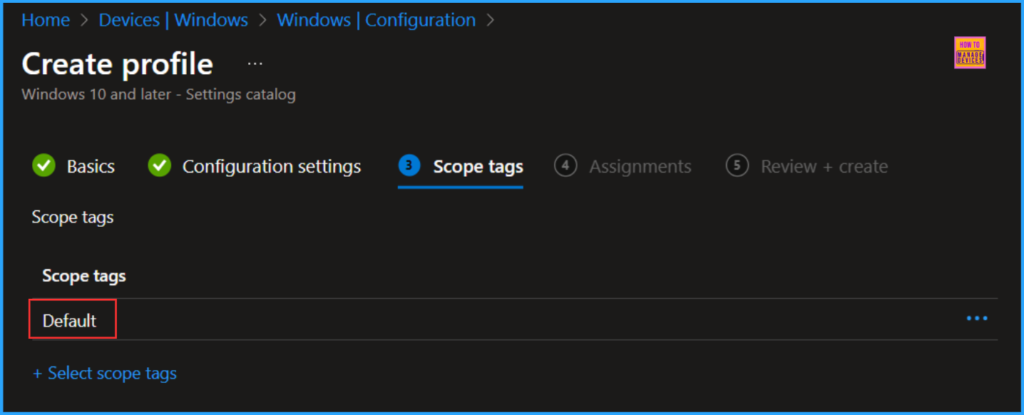
I am assigning the configuration policy to the HTMD CPC – Test device group, specifically for a Windows 365 Cloud PCs. To do this, click on Add groups and select the desired device group under the Included groups option. In this example, I am not using any filters, and I have left the Excluded groups option blank.
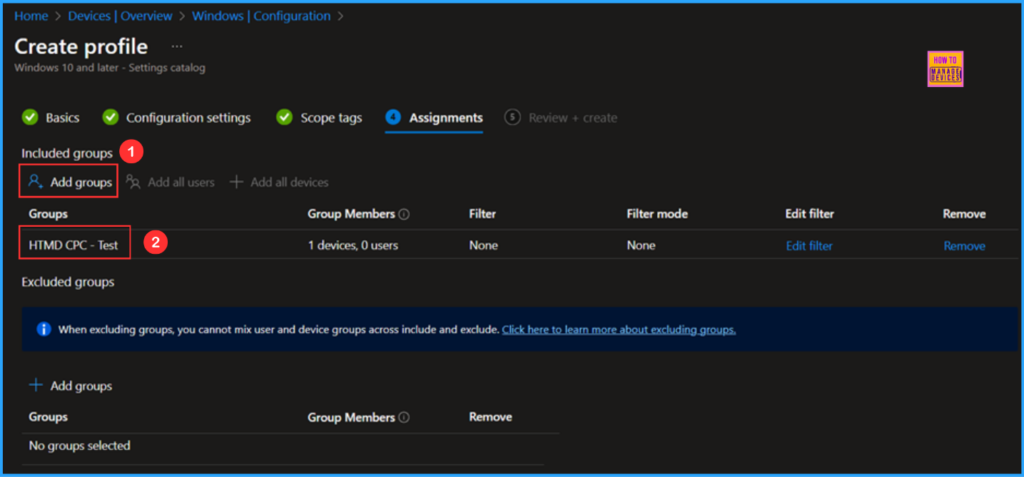
On the Review + create page, carefully review all the settings you’ve defined for the Remove Default Microsoft Store Packages policy. Once you’ve confirmed everything is correct, select Create to deploy the policy.
- Easy Guide to Deploy Azure VPN Client Microsoft Store App using Intune
- Unpin Microsoft Store Apps from Taskbar with Intune | Do Not Allow Pinning Store App to the Taskbar
- Microsoft Store Apps Fail to Install with Error Code 0x80190194
- Intune Security Policy to Set Up Smart Screen Enhanced Phishing Protection
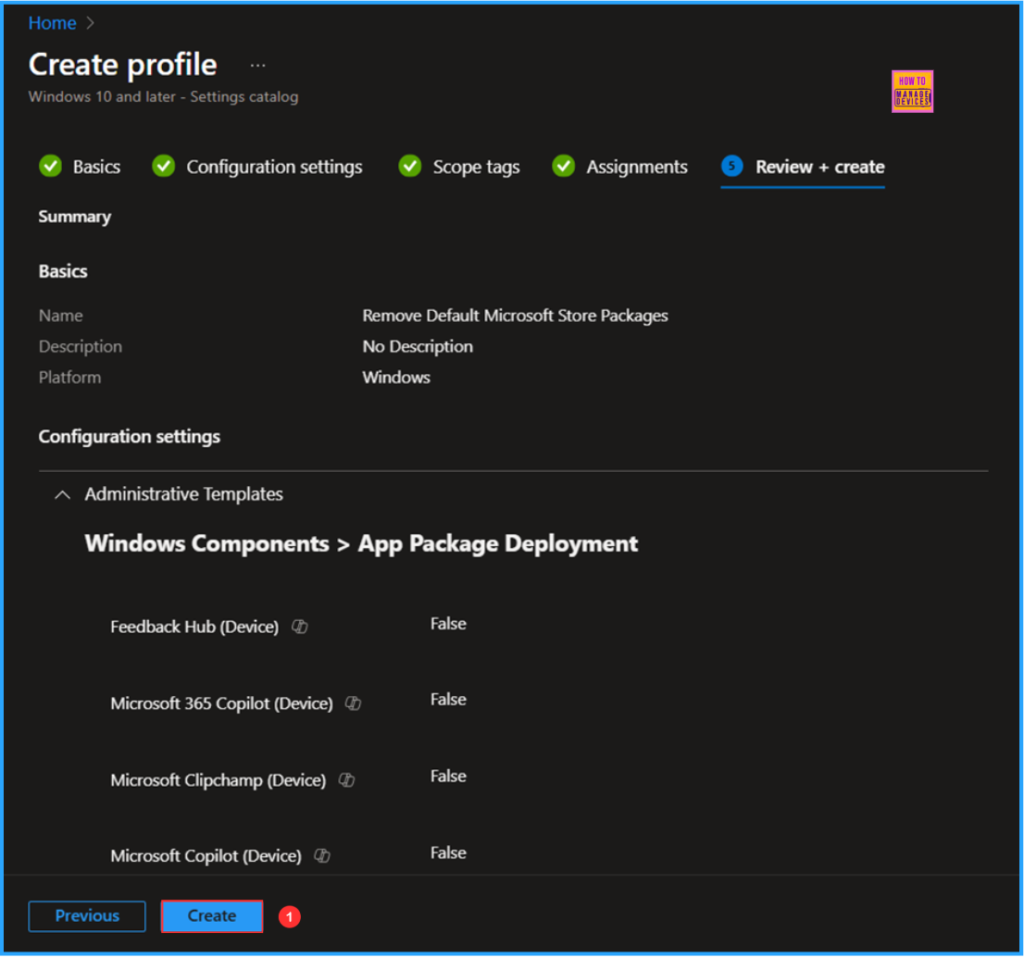
Monitor the Remove Default Microsoft Store Package Policy Deployment
The configuration policy has been deployed to the HTMD CPC – Test, a Windows 365 Cloud PC Microsoft Entra ID Device group. Once the device is synced, the policy will take effect immediately. To monitor the policy deployment status from the Intune Portal, follow the steps below.
- Navigate to Devices > Windows > Configuration > Search for the Remove Default Microsoft Store Packages configuration policy.
- Under the Device and user check-in status, you can see the policy’s deployment status
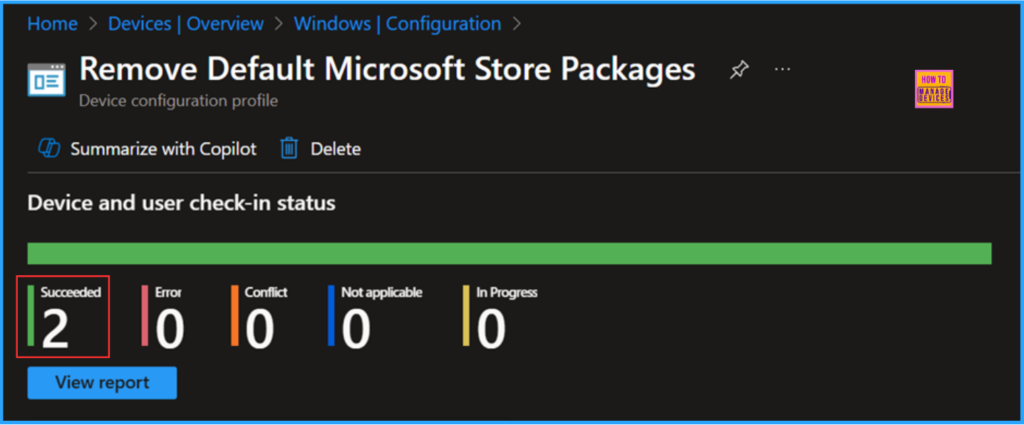
Intune Event Log Analysis
We can now verify if the Remove Default Microsoft Store Packages policy is functioning correctly. First, log into the device that is affected by the policy. Then, check the policy’s status using the Intune Event Logs. To do this, open the Event Viewer on the device.
- Navigate to Applications and Services Logs > Microsoft > Windows > Devicemanagement-Enterprise-Diagnostics-Provider – Admin
Filter the latest logs using Event ID 814 to easily locate the successful log. The screenshot below indicates that the policy was successfully applied to the system, confirming that our policy has worked effectively.
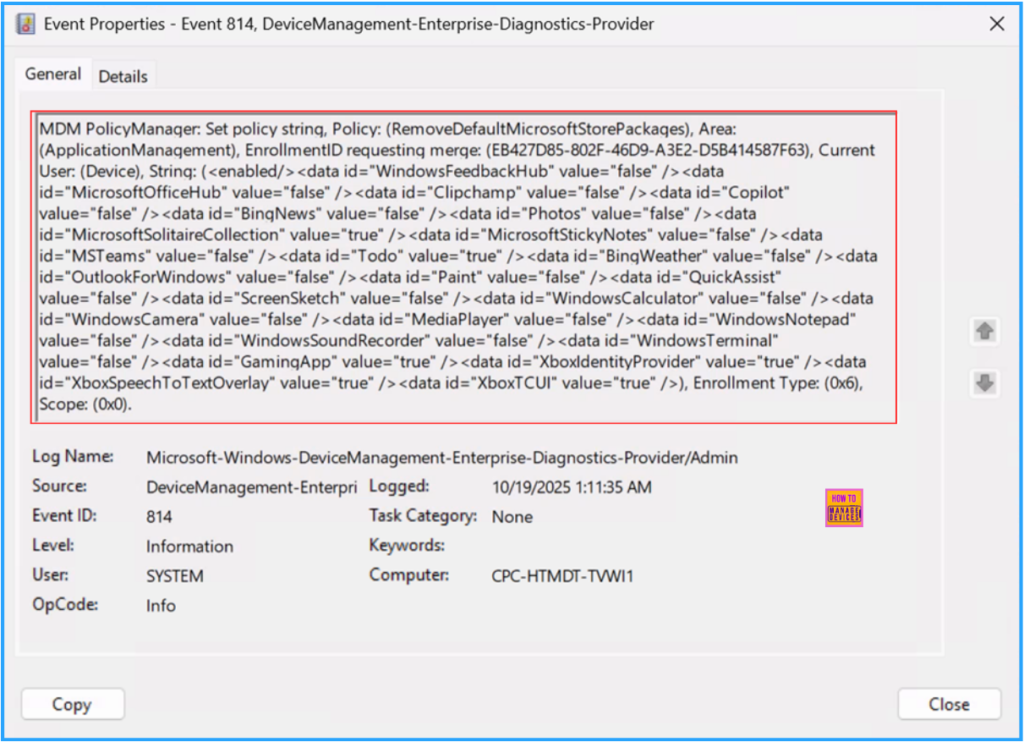
Need Further Assistance or Have Technical Questions?
Join the LinkedIn Page and Telegram group to get the latest step-by-step guides and news updates. Join our Meetup Page to participate in User group meetings. Also, Join the WhatsApp Community to get the latest news on Microsoft Technologies. We are there on Reddit as well.
Author
Vaishnav K has 12 years of experience in SCCM, Intune, Modern Device Management, and Automation Solutions. He writes and shares knowledge about Microsoft Intune, Windows 365, Azure, Entra, PowerShell Scripting, and Automation. Check out his profile on LinkedIn.
